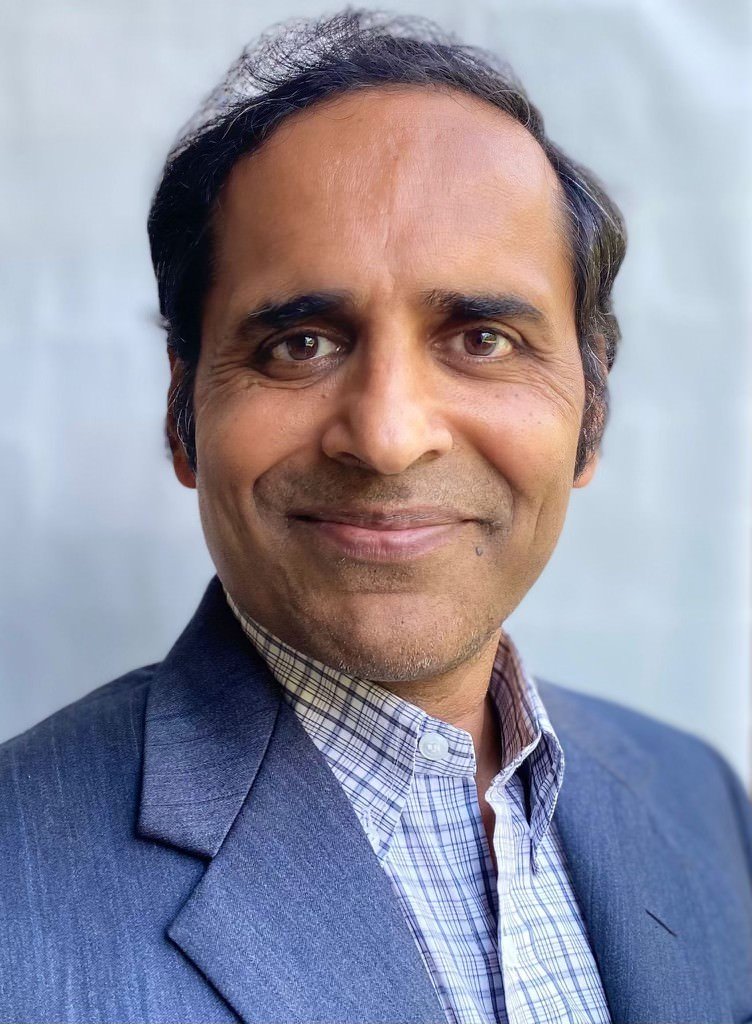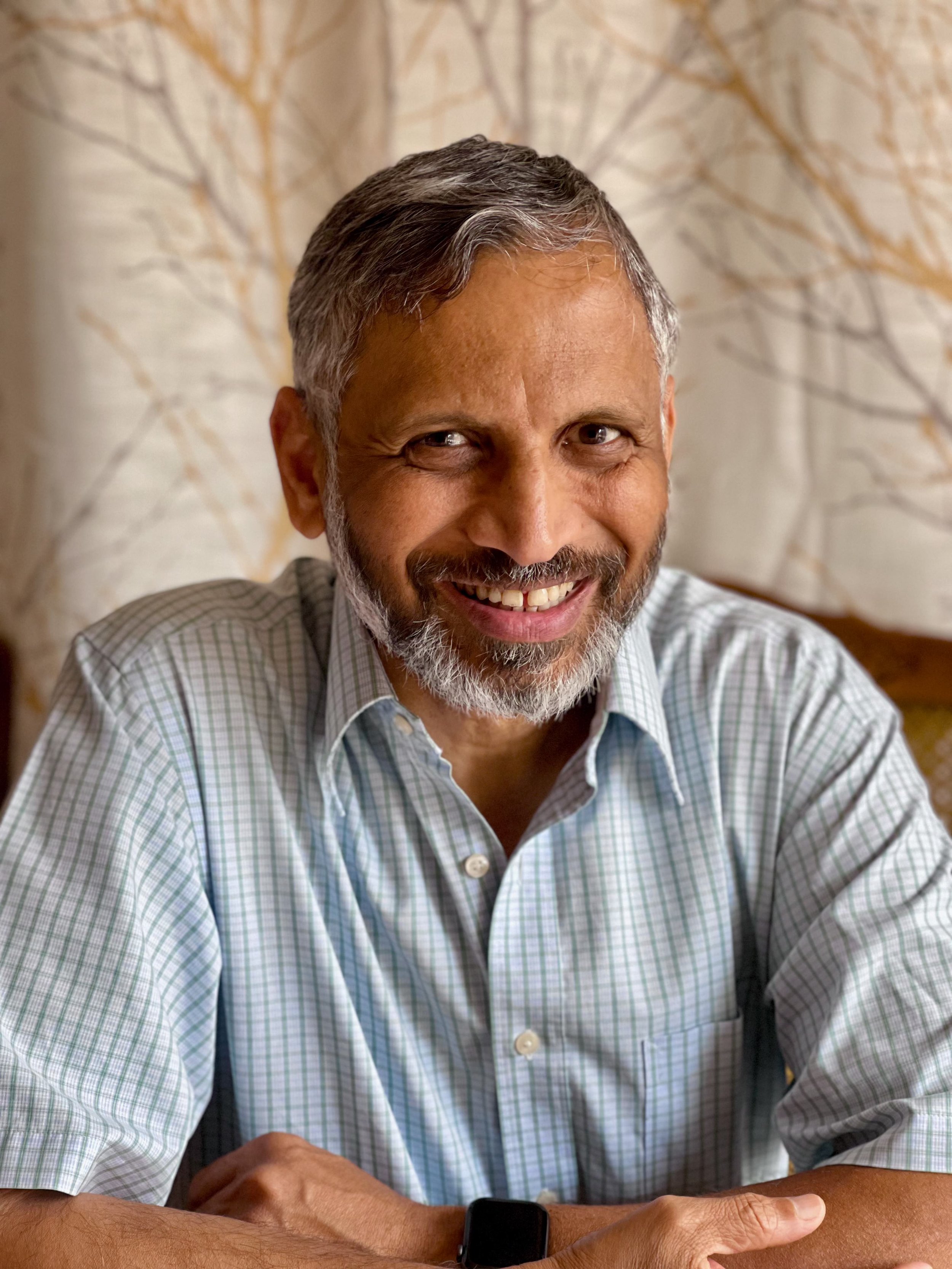Dr. Prasad Kaipa and Manikantan Somayaji
Yoga has made its mark on global consciousness like few other practices from ancient times. In a world that's grappling with sweeping changes across work, wellness, and personal lives, more than a quarter of U.S. adults says they are so stressed they can’t function. According to the World Health Organization, common mental disorders such as anxiety and depression cost the world economy US$ 1 trillion annually. This International Yoga Day, as we mark the second year following a major pandemic, it's high time we delve deeper into what yoga can offer to our post-pandemic world.
Indian Prime Minister Narendra Modi leading yoga in International Day of Yoga in New Delhi. Credit: AP
While Yoga has become popular with an estimated 300 million practitioners worldwide, 34 million in US alone, the popular conception of yoga is often limited to 'asanas', the physical postures, that form just one of the eight limbs of yoga according to Yoga Sutras of Patanjali. Yes, the asanas can give you a workout rivalling any gym session, but to say yoga is equivalent to a gym routine is akin to mistaking a single wave for the entire ocean.
Pranayama, or breathing awareness, is another critical limb that goes hand in hand with asanas is often overlooked in Western practices. Breathing techniques can turn around many debilitating health issues and according to Dr. Andrew Huberman, a neuroscience professor in Stanford University, changing how you breathe can halt stress in its tracks. He called a particular kind of pranayama – a shorter inhalation followed by longer exhalation a ‘psychological sigh.’ Whether a psychological sigh or complex 'Wim Hof Method', which helped its namesake earn several Guinness Book mentions, they are intrinsically tied to our emotional and physical well-being. The unique harmony of Asana and Pranayama sets yoga apart, offering us a mindful synchronicity that extends far beyond the mat.
Yama and Niyama, the first two limbs, lay the ethical and moral groundwork for a yogic lifestyle. They establish a respectful contract with the world, leading to mental clarity, emotional balance, and spiritual awakening. Interestingly, the pandemic has nudged us towards these principles. Remote work and reduced commuting have lessened our ecological footprint, aligning with one of five Yamas, 'Ahimsa' or non-violence, towards our planet. The introspection time, on the other hand, mirrors 'Svadhyaya' or self-study. Indeed, the pandemic has pushed us to reflect on our lives, redefining our relationships, and reconsidering our work-life integration.
The fifth limb, Pratyahara, encourages us to disconnect from our senses (eg: digital overload) and reconnect with ourselves. First five limbs form the Bahiranga (external) yoga, which, when mastered, can help us tap into latent human potential.
The final three limbs—Dharana, Dhyana, and Samadhi—represent Antaranga yoga, the internal aspect of yoga that taps into the power of the mind. Here, we find the roots of mindfulness—a concept now widespread in the West. Mindfulness-Based Stress Reduction (MBSR) techniques, widely recognized for their effectiveness in dealing with stress and trauma, can be traced back to the principles found in these limbs of yoga.
In our post-pandemic world, as we shift focus towards health, well-being, and meaningful living, the comprehensive form of yoga offers a path. This isn't just about flexibility or stress relief, but a journey of self-transformation that begins with self-discipline, leading to inner peace, equanimity, and joy.
Dharana and Dhyana can also get us in touch with our inner presence, peace of mind and inner happiness and those manifest externally as us having Gravitas or ‘executive presence’, a sought after trait in workplaces. Yoga’s principles of focus and discipline have even been applied successfully by many like the Indian youngsters in winning the Scripps Spelling Bee championships year after year, thanks to coaching that they receive from North South Foundation.
Imagine the potential if we were to extend the application of these principles to broader life challenges and opportunities! The expanded practice of yoga can, lead to an increase in productivity, creativity and focus, a reduction in stress levels, and a greater understanding and acceptance of ourselves and others in a divisive world.
As we commemorate International Yoga Day this year, it's worth reflecting on how yoga, in its comprehensive form, has so much to offer in redefining our world. Its reach extends beyond the Indian diaspora, who, with their growing presence across global leadership roles, are uniquely poised to share this holistic understanding of yoga. As the focus of leadership evolves from the single bottom-line of profit to a triple bottom-line incorporating social and environmental considerations, the principles and practices of yoga can guide leaders to create harmonious, sustainable businesses and communities.
Furthermore, it's fascinating to note how much of this ancient wisdom aligns with the objectives of contemporary movements. For example, the growing emphasis on mental health finds a companion in the yoga sutras. The focus on sustainable living resonates with the principles of Yama and Niyama. Mindful practices, once considered alternative, are now at the forefront of mainstream wellness conversations. In this synergy, there's a validation of yoga's timeless relevance and an indication of its role in shaping our collective future.
As we navigate the complexities of our post-pandemic reality, yoga offers us a framework for transformation—an opportunity to redefine our relationship with ourselves, with others, and with the world at large. Whether it's through mastering a difficult pose or merely observing our breath, every small step on the yoga path can lead to profound inner shifts.
The power of yoga lies not just in its ability to help us touch our toes but in helping us reach within and touch our true selves. To engage with yoga at this level means to embark on a journey of continuous learning and growth, one that can equip us to navigate life with resilience, grace, and equanimity.
As we continue to explore the depths of yoga, let's remember to celebrate its richness and diversity. Whether you're practicing Ashtanga yoga in a New York studio, meditating by the Ganges, or performing Pranayama in your living room, you're contributing to a global tapestry of transformation.
On this International Yoga Day, let's envision a future where the understanding of yoga transcends the asanas. Let's strive to adopt its deeper wisdom in our daily lives. After all, the ultimate goal of yoga, as described in the Yoga Sutras, is to still the fluctuations of the mind. Amidst the fluctuations of our changing world, that sense of stillness might just be the anchoring force we need.
Both authors are with Institute of Indic Wisdom that focuses on contextualizing Indic wisdom for modern management. Prasad was a CEO coach and a professor and is also a director of YogaBharati, chairman of Samskrita Bharati USA and a trustee of North South Foundation. Mani is an executive coach and used to be a senior manager in Yahoo and was an entrepreneur.
Sri. Manikantan
Dr. Prasad Kaipa


